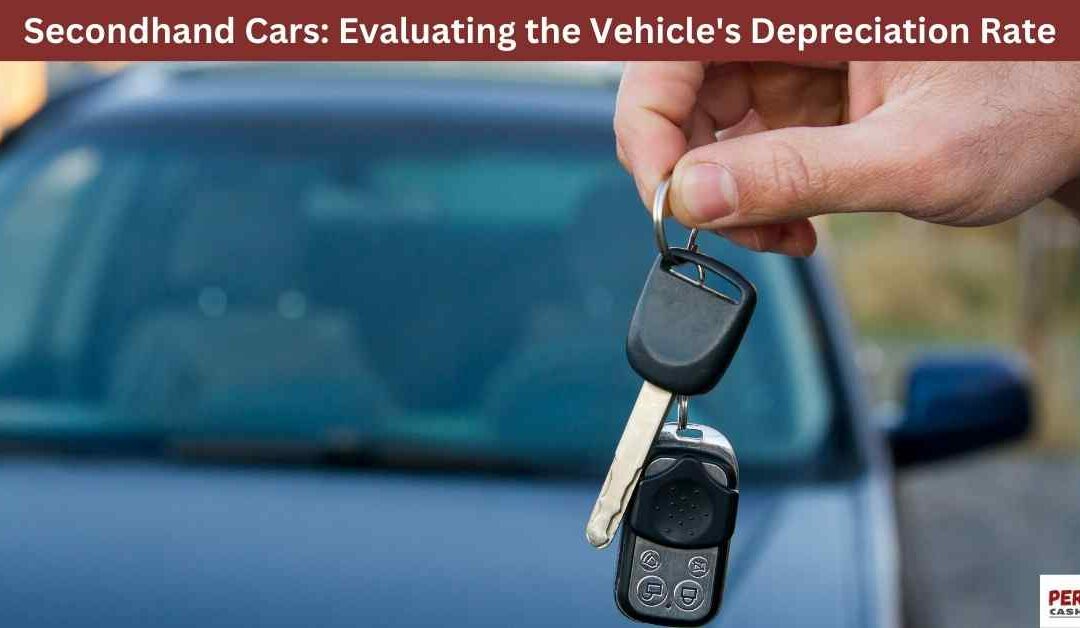Depreciation is an inevitable aspect of owning a car. Understanding how a vehicle depreciates is crucial, especially when buying or selling secondhand cars. Depreciation affects the car’s value over time, and knowing how to evaluate it can help you make informed decisions. In this article, we’ll explore how to evaluate the depreciation rate of secondhand cars and what factors influence it.
1. What is Depreciation?
Depreciation refers to the decrease in a vehicle’s value over time. From the moment a new car is driven off the lot, it begins to lose value. This decline continues as the car ages and accrues mileage. Understanding how much a car has depreciated and will continue to depreciate is key to evaluating its worth.
2. Factors Influencing Depreciation
Several factors contribute to a car’s depreciation rate:
- Age: Newer cars depreciate faster in their first few years. After the initial steep decline, the rate of depreciation slows down.
- Mileage: Higher mileage generally means more wear and tear, leading to greater depreciation. A car with lower mileage is often more valuable.
- Make and Model: Some brands and models hold their value better than others. Luxury and high-end brands may depreciate slower than economy cars.
- Condition: Well-maintained cars with minimal wear and tear depreciate less than those in poor condition.
- Market Demand: Cars in high demand or with a strong resale market tend to depreciate slower.
- Economic Factors: Market conditions, such as fuel prices and economic stability, can influence depreciation rates.
3. Tools for Evaluating Depreciation
Several tools and resources can help you evaluate a car’s depreciation:
- Online Valuation Tools: Websites like Kelley Blue Book, Edmunds, and Redbook provide estimates of a car’s value based on make, model, year, and condition. These tools can give you a snapshot of how a car has depreciated and its current worth.
- Depreciation Calculators: Some websites offer calculators that predict future depreciation based on various factors, helping you estimate a car’s value over time.
- Vehicle History Reports: Services like Carfax or AutoCheck provide detailed histories of cars, including accident records, maintenance, and ownership changes. This information can affect a car’s depreciation rate.
4. Assessing Depreciation for Secondhand Cars
When evaluating a secondhand car, consider the following steps to assess its depreciation rate:
- Compare Similar Models: Look at the depreciation rates of similar cars in the same category. This can give you a benchmark for how the car you’re interested in is likely to depreciate.
- Check Resale Values: Research the resale values of the car’s make and model over the past few years. This can indicate its depreciation trend.
- Evaluate Condition and Mileage: Assess how the car’s condition and mileage compare to similar models. Better condition and lower mileage often mean slower depreciation.
- Consider Ownership Costs: Factor in ongoing ownership costs such as maintenance, insurance, and fuel. These can impact the overall cost of owning a secondhand car.
5. Strategies to Minimize Depreciation Impact
While depreciation is unavoidable, there are ways to minimize its impact:
- Buy Used Instead of New: Buying a slightly used car that has already gone through the steepest depreciation can save you money and reduce the impact of future depreciation.
- Choose Brands and Models Wisely: Opt for cars known to have slower depreciation rates. Research and choose models that hold their value well.
- Maintain Your Vehicle: Regular maintenance and keeping your car in good condition can slow down its depreciation rate.
- Limit Mileage: Reducing the amount you drive can help maintain your car’s value by keeping mileage low.
- Consider Market Trends: Stay informed about market trends and economic factors that might affect depreciation rates. This knowledge can help you make better purchasing decisions.
6. Depreciation and the Australian Market
In Australia, car depreciation trends can vary based on factors such as:
- Local Market Demand: Some cars are more popular in Australia, leading to slower depreciation. For instance, utes and SUVs often retain their value better due to their popularity.
- Economic Conditions: Economic stability and fuel prices in Australia can impact car values and depreciation rates.
- Import and Export Factors: The availability of imported cars and the demand for Australian vehicles abroad can also influence depreciation trends.
7. Using Depreciation to Your Advantage
Understanding depreciation can help you make better financial decisions when buying or selling a car:
- Buy at the Right Time: Purchasing a car just as its depreciation rate slows down (typically 2-3 years old) can provide good value.
- Sell Before Major Depreciation Hits: If you own a car that is about to enter a period of higher depreciation (such as reaching a high mileage milestone), consider selling it beforehand.
- Negotiate Based on Depreciation: Use knowledge of a car’s depreciation rate to negotiate a better price, whether you’re buying or selling.
Evaluating the depreciation rate of secondhand cars is essential for making informed buying and selling decisions. By understanding the factors that influence depreciation, using the right tools, and applying strategic approaches, you can maximize the value and minimize the financial impact. Whether you’re in the market for a used car or looking to sell one in Perth, being informed about depreciation will empower you to make smarter choices and secure the best deals.
Now Perth Cash 4 Cars is available in East Victoria Park Western Australia 6101.
Perth Cash 4 Cars
0402 637 636

